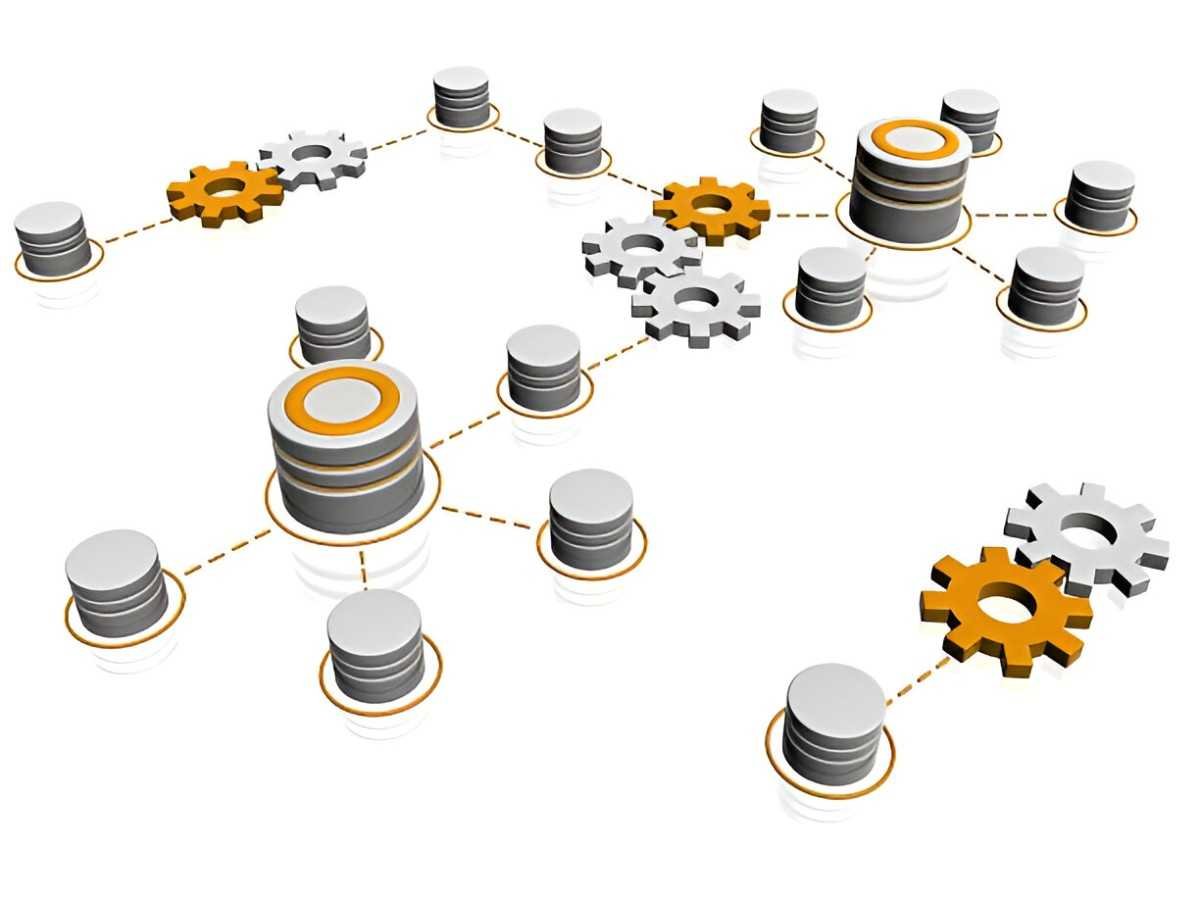Data is the lifeblood of decision-making in today’s business world. As organizations strive to stay competitive, they face an increasingly complex landscape of information systems. One of the most efficient and effective ways to manage data is through the use of single-source data systems. These systems centralize data into one place, ensuring accuracy, consistency, and ease of access. If you’ve ever found yourself overwhelmed by managing data spread across multiple sources, a single-source data system might be the solution you’re looking for. In this article, I will walk you through the basics of single-source data systems, their importance, how they function, and the benefits they bring to businesses.
Table of Contents
What is a Single-Source Data System?
A Single-Source Data System refers to a centralized data repository where all relevant data is stored, processed, and accessed from one location. Unlike traditional data systems where information is spread across multiple databases or applications, a single-source system provides a unified platform for all business data. This could include customer records, financial transactions, inventory data, and other critical business information.
By consolidating data into a single system, businesses can avoid inconsistencies, errors, and discrepancies that arise from using multiple data sources. A single-source system can be an essential tool in modern data management, simplifying the decision-making process by offering a clearer, more complete view of the organization’s operations.
Example
Consider a business that tracks customer data in multiple systems: a CRM system for sales, an inventory management system for products, and an accounting system for financial transactions. Each of these systems stores data related to the same customers but might not be synchronized with the others. In this scenario, a single-source data system could pull information from these various systems and store it in one place, providing a unified view of the customer.
The Role of a Single-Source Data System in Business Operations
A Single-Source Data System plays a crucial role in ensuring that decision-makers across all levels of the organization have access to accurate, real-time data. By removing the complexity of accessing data from different systems, these systems streamline processes and make data-driven decisions more accessible.
- Data Accuracy and Consistency
One of the main challenges with managing data from multiple sources is ensuring accuracy and consistency. Data errors can occur when different teams or departments have separate records or duplicate entries for the same information. A single-source data system helps eliminate these issues by providing a single version of the truth, ensuring that everyone in the organization is working with the same set of data.
- Improved Decision-Making
By consolidating data into a single repository, decision-makers can access comprehensive insights into the business. A unified system provides a holistic view, allowing for more informed, strategic decisions. For instance, if a company can view customer data alongside inventory levels and financial transactions, it can make better decisions about stock replenishment, marketing campaigns, and customer service.
- Increased Efficiency
Accessing data from multiple systems often involves manual processes that are time-consuming and error-prone. With a single-source data system, all relevant data can be retrieved from one place, making it easier for employees to do their jobs more efficiently. This can lead to increased productivity and faster decision-making, which are critical for staying competitive in today’s fast-paced business environment.
Types of Single-Source Data Systems
Single-source data systems can take various forms depending on the size and complexity of the organization. Below are some common types:
1. Data Warehouses
A data warehouse is a centralized repository where data from multiple sources is stored and processed. Data warehouses are designed for analytics and reporting, making them ideal for businesses that need to consolidate large amounts of historical data. They store structured data and are optimized for querying and reporting.
2. Cloud-Based Systems
Cloud-based data systems are increasingly popular as they offer flexibility, scalability, and remote access. These systems store data in the cloud and can be accessed via the internet. They are often used by businesses with a global presence or those that need to store large amounts of data.
3. Enterprise Resource Planning (ERP) Systems
ERP systems integrate various business processes into one unified platform, including finance, HR, inventory, and customer relationship management. These systems are often used by larger organizations to manage their entire operation, with a focus on streamlining workflows and ensuring data consistency.
4. Customer Relationship Management (CRM) Systems
CRMs centralize customer data, allowing businesses to manage and analyze customer interactions, sales, and service requests. They are essential for businesses that rely heavily on customer relationships and aim to improve customer service and sales performance.
Advantages of Single-Source Data Systems
Single-source data systems come with numerous advantages. Below, I’ll outline the key benefits these systems offer:
1. Data Quality and Integrity
By eliminating discrepancies and duplicates, a single-source data system ensures that data quality and integrity are maintained. It reduces the risk of errors, which can be costly in decision-making and reporting.
2. Cost Savings
Maintaining multiple data systems can be expensive, as it requires additional resources for management, maintenance, and support. A single-source data system reduces these costs by consolidating data into one platform, making it easier to maintain and update.
3. Enhanced Collaboration
When everyone in the organization is working with the same set of data, collaboration becomes more straightforward. Employees in different departments, such as marketing, sales, and finance, can access the same data and share insights more easily, leading to more cohesive strategies and improved teamwork.
4. Real-Time Reporting and Analytics
With a single-source data system, businesses can leverage real-time data for reporting and analytics. This allows for quicker responses to market changes, customer demands, or operational issues. Real-time insights help businesses stay ahead of the competition and make proactive decisions.
5. Scalability
As businesses grow, their data needs increase. Single-source data systems can scale with the business, allowing for the addition of new data sources, users, and applications without the complexity of managing multiple data systems.
The Importance of Data Integration in Single-Source Data Systems
Data integration is a key component of any single-source data system. It involves combining data from different sources, such as databases, applications, or external data providers, into a single unified view. Integration ensures that all data is accurate, timely, and aligned, reducing silos within the organization.
Effective data integration enables businesses to:
- Avoid Redundancy: By integrating data from various sources, businesses can ensure that there is no duplication, leading to cleaner and more accurate data.
- Provide a Holistic View: Integration provides a complete view of business operations, combining data across different departments and functions.
- Facilitate Automation: By integrating data, businesses can automate key processes, such as inventory management, customer service, and financial reporting.
Challenges of Implementing Single-Source Data Systems
While single-source data systems offer numerous benefits, implementing them can present some challenges. Below are the most common obstacles organizations face:
1. Data Migration
Moving data from various systems into a single-source system can be complex and time-consuming. Businesses must ensure that the migration process is smooth to avoid data loss or corruption. A detailed plan and adequate resources are necessary to ensure successful data migration.
2. System Compatibility
Not all data systems are designed to integrate seamlessly with one another. Some systems may require customization or special connectors to allow for proper data flow. Ensuring compatibility between different systems can be a significant challenge.
3. Data Security and Privacy
With all data housed in one system, security and privacy become even more critical. A breach or data leak could affect the entire organization. Organizations must invest in robust security measures and compliance protocols to protect sensitive data.
4. Cost of Implementation
The initial investment required to implement a single-source data system can be substantial, especially for larger organizations. This includes costs for software, infrastructure, and personnel. However, the long-term benefits often outweigh these initial costs.
Example: Calculating the ROI of a Single-Source Data System
Let’s consider an example to understand the potential return on investment (ROI) of implementing a single-source data system. Imagine a company spends $500,000 annually on maintaining multiple data systems. After implementing a single-source data system, the company reduces this cost by 30% due to lower maintenance and integration costs.
Calculation of Savings:
\text{Savings} = 500,000 \times 0.30 = 150,000 , \text{USD}In addition, the company experiences a 20% increase in efficiency, leading to better decision-making and faster time to market. This can result in increased revenue. Let’s assume that the company generates $5 million in revenue annually and estimates a 2% increase in revenue due to the improved efficiency.
Calculation of Increased Revenue:
\text{Increased Revenue} = 5,000,000 \times 0.02 = 100,000 , \text{USD}The total ROI from implementing the single-source system is:
\text{ROI} = 150,000 , (\text{Savings}) + 100,000 , (\text{Increased Revenue}) = 250,000 , \text{USD}This example shows that the investment in a single-source data system could potentially provide significant savings and revenue benefits.
Conclusion
A Single-Source Data System is a powerful tool that can transform how a business manages and utilizes its data. By consolidating data into one central location, organizations can improve decision-making, enhance efficiency, and drive better business outcomes. While there are challenges in implementing such a system, the long-term benefits make it a worthwhile investment for businesses of all sizes. With the right tools and strategy, a single-source data system can serve as the backbone of a business’s data-driven success.





